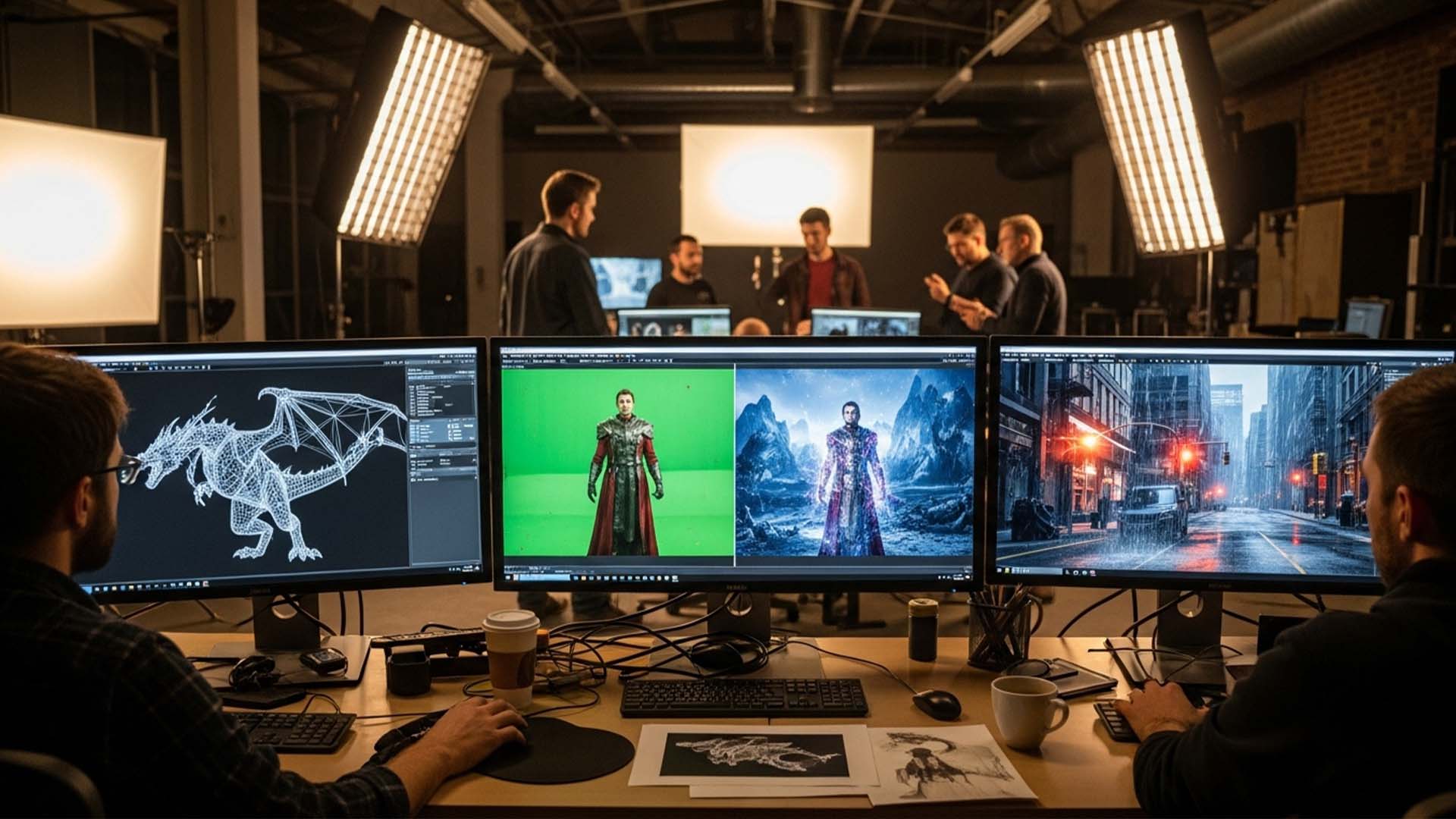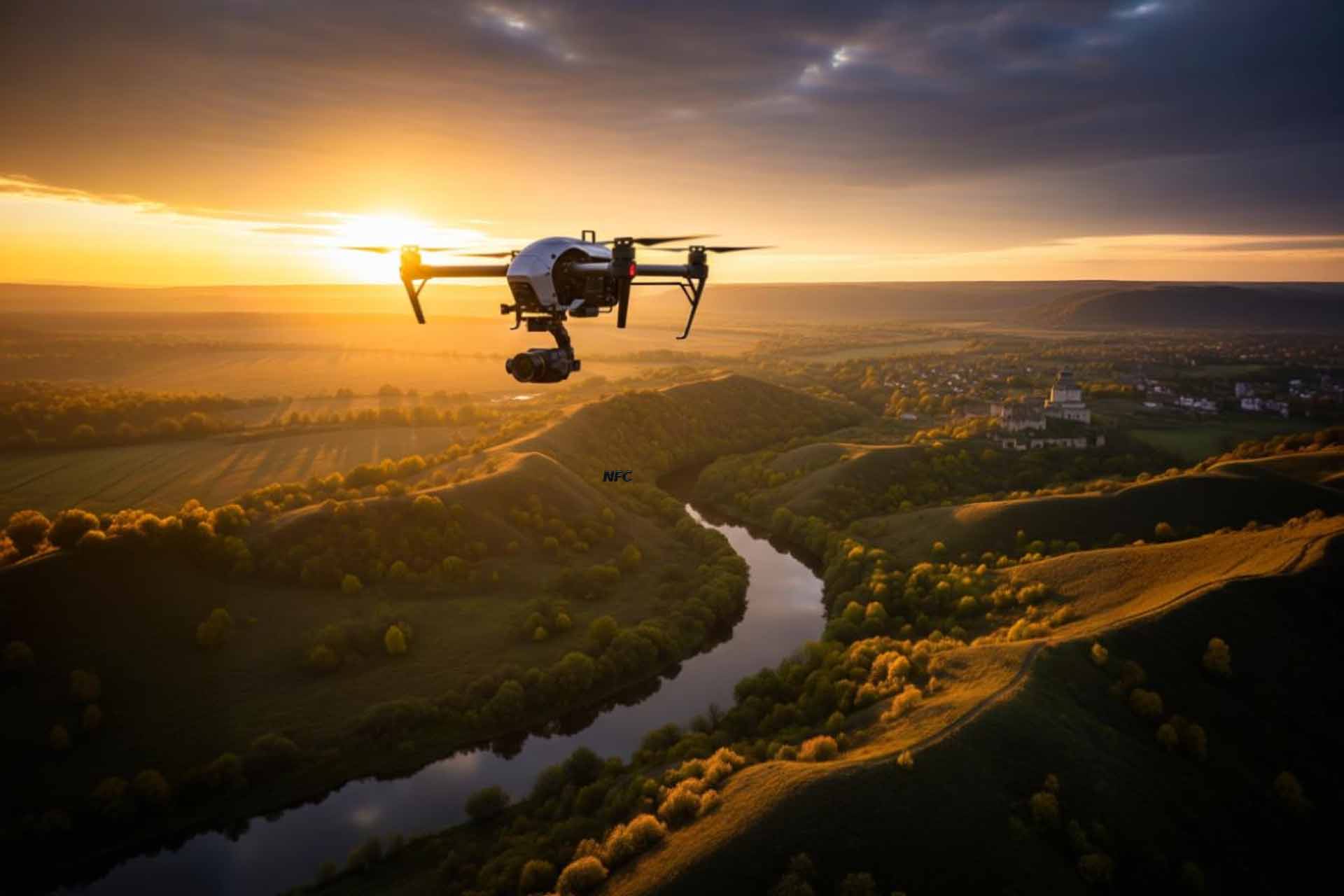
Behind the Scenes of a VFX Project
Every great film or commercial hides a world of invisible artistry — the visual effects (VFX) that bring imagination to life.
At Loop Media, we dive deep into this world behind the camera, where raw footage transforms into breathtaking scenes through creativity, precision, and cutting-edge technology.
The Three Stages of a VFX Project
1️⃣ Pre-Production: Planning the Magic
Every successful VFX project begins long before the cameras roll. Loop Media’s team meticulously plans each scene that requires visual enhancement to ensure perfect harmony between live footage and digital assets.
Key Steps in Pre-Production
- Script Breakdown: The VFX supervisor identifies where and what type of effects are needed — 3D modeling, digital environments, or physics simulations.
- Concept Art & Storyboards: Artists create early visualizations of creatures, environments, or complex sequences to define the creative direction.
- Previsualization (Previs): A rough 3D version of the scene helps determine camera angles, timing, and motion before filming.
- Technical Planning: The team defines which techniques will be used — green screens, tracking markers, lighting measurements, and camera setups — to ensure smooth integration later.
2️⃣ Production: Capturing the Foundation
This is where the creative vision meets the lens. The VFX team ensures that every frame filmed is ready for digital enhancement.
Key tasks during production include:
- Filming with Green or Blue Screens for shots that will later include digital backgrounds or creatures.
- Collecting Reference Data: High-resolution photos, HDR lighting captures, and precise camera measurements (lens, focal length, angle) are taken to match digital and real-world elements seamlessly.
The collaboration between cinematographers and VFX supervisors at Loop Media ensures consistency, realism, and creative flexibility throughout the process.
3️⃣ Post-Production: Where the Magic Happens
In this phase, artistry and technology merge to create the final visual spectacle.
Dozens of artists and technical specialists collaborate across departments to build, animate, and composite each shot.
Core Stages of Post-Production
- Tracking & Matchmoving: Reconstructing the camera’s movement digitally to anchor 3D elements perfectly.
- Rotoscoping: Isolating and removing unwanted elements (like wires or tracking markers).
- 3D Modeling: Creating digital assets such as vehicles, buildings, or creatures.
- Animation: Bringing models to life based on the director’s vision.
- Simulation: Generating realistic effects like fire, smoke, water, explosions, and fabric motion.
- Lighting & Rendering: Matching the digital lighting with on-set lighting using HDR data.
- Digital Environments: Extending or replacing real backgrounds with detailed 3D landscapes or futuristic cities.
- Compositing: The final stage, where all layers — live footage, CG elements, lighting, and color — merge into one seamless, realistic image using software like Nuke or After Effects.
Each shot can take hundreds of hours, often involving collaboration between multiple studios.
Loop Media proudly contributes to these projects, developing essential visual elements and refining the final composition to cinematic perfection.
Creativity Behind the Camera
While the audience only sees the finished masterpiece, the artistry behind it tells another story.
Loop Media plays a key role in shaping that story — crafting digital illusions, designing immersive environments, and ensuring that every frame tells more than words ever could.
From blockbuster-level effects to brand commercials, Loop Media stands at the crossroads of imagination and precision.
Frequently Asked Questions About VFX Projects
What is a VFX project?
A VFX project is the process of blending computer-generated imagery with live-action footage to create visuals that would be impossible or too costly to film in real life.
What’s the difference between VFX and SFX?
VFX (Visual Effects) are created digitally in post-production, while SFX (Special Effects) are practical effects done physically during filming.
How long does it take to complete a VFX project?
The timeline depends on the project’s complexity — large productions can take anywhere from a few months to over a year.
Which software tools are used in VFX production?
Common tools include Nuke, After Effects, Houdini, Maya, Blender, and Cinema 4D.
 العربية
العربية


